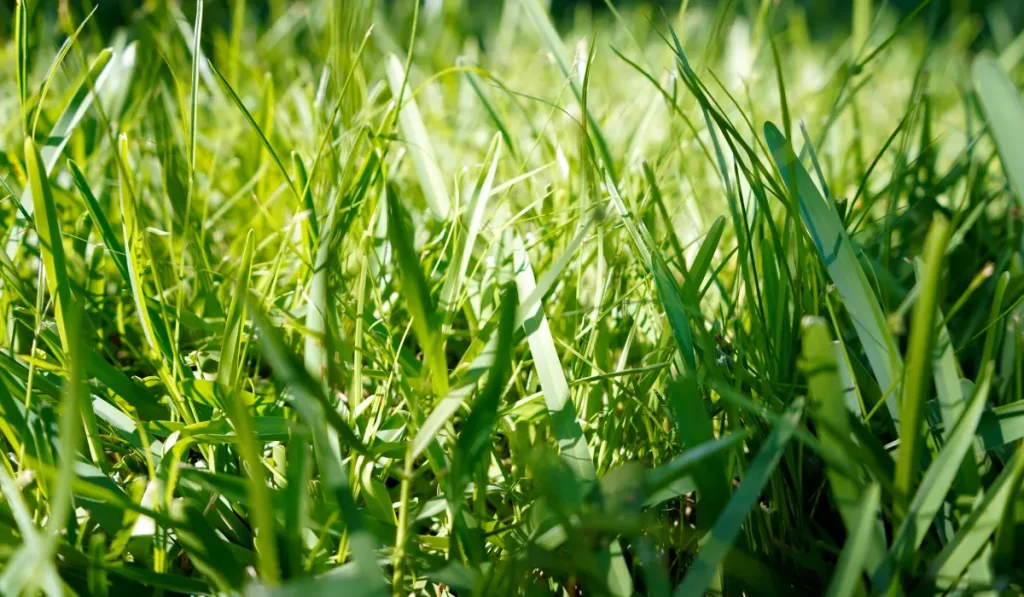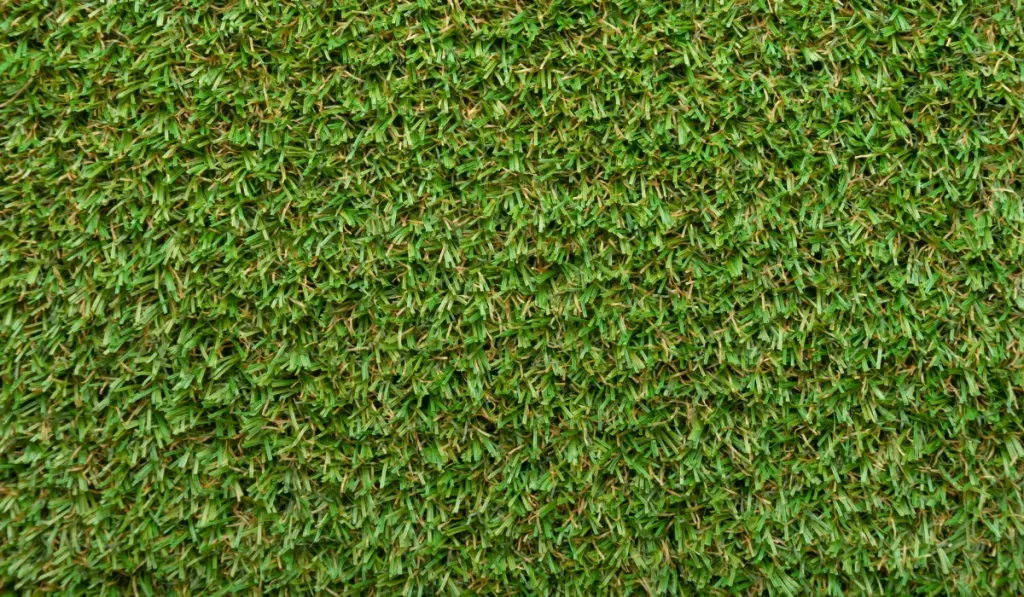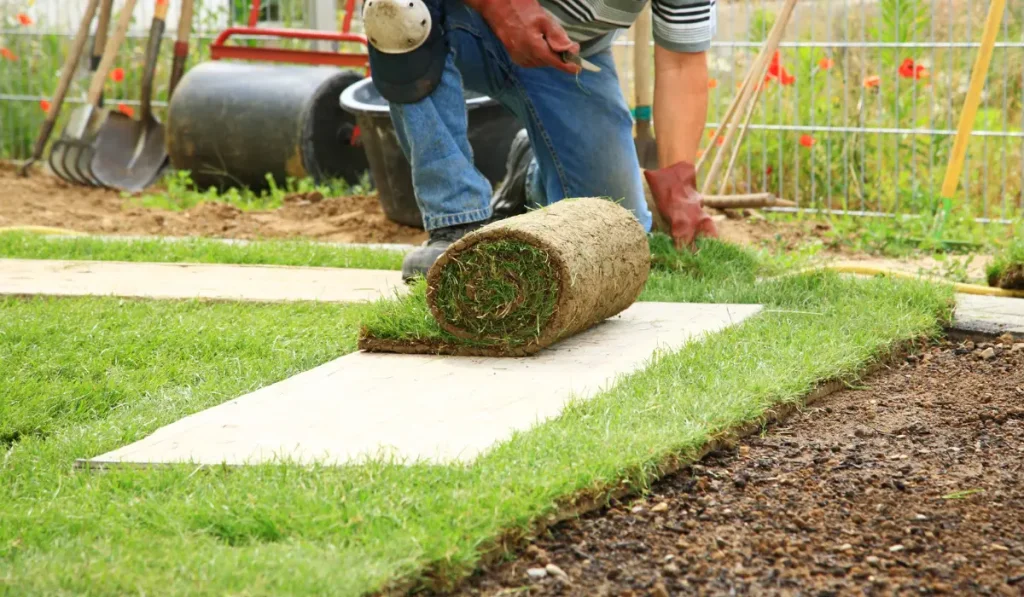Ever wondered which grass type is better for your lawn, St. Augustine or Bermuda? St. Augustine grass offers a lush, thick carpet ideal for shaded areas.
On the other hand, Bermuda grass thrives in sunny, high-traffic spots due to its resilient nature.
Which one suits your backyard best? Read on to discover the pros and cons of each to make an informed choice that will keep your lawn looking its best.
Key Takeaways
- St. Augustine grass is favored for its dense coverage and salt tolerance, thriving in warm, humid conditions with regular high-nitrogen fertilization.
- Bermuda grass excels in warm, dry climates, featuring a dense, drought-tolerant growth ideal for high-traffic areas.
- The main differences between St. Augustine and Bermuda grass include their climate preferences, maintenance needs, and visual appeal.
- Choosing the right grass type for a lawn depends on the local climate, soil type, sunlight exposure, maintenance capability, and intended lawn usage.
What Is St. Augustine Grass?

St. Augustine grass is one of the best blades, as it is broad and flat. Its blue-green color and coarse texture provide a visually appealing landscape. Palmetto is a popular cultivar, prized for its finer leaf texture and tolerance to shade.
Known for its rapid growth, it quickly establishes a strong root system. This makes it resistant to weeds and erosion. Unlike many turfgrasses, it tolerates salt well.
Ideal Growing Conditions
For optimal health, here’s an overview of the optimal growing conditions of St. Augustine grass:
| Growing Conditions | Details |
|---|---|
| Climate | Warm, humid |
| Sunlight | Full sun to partial shade |
| Soil Type | Well-drained, rich in organic matter |
| pH Level | Slightly acidic to neutral |
| Watering Needs | Regular |
| Fertilization | Multiple times annually with high-nitrogen fertilizer |
Pros and Cons of St. Augustine Grass
Pros
- Vibrant green color and coarse texture.
- Quickly covers bare spots, making it a favorite among homeowners.
- Has an excellent shade tolerance compared to many other turf types.
Cons
- Susceptible to grub and chinch bug infestations.
Compared to hardier varieties, this grass needs more attention and care, making it more costly to maintain. It also has specific nutrient needs, so regular fertilization is a must.
What Is Bermuda Grass?

Bermuda grass stands out with its fine texture and dense growth. This grass type establishes quickly to create a lush, green turf that’s both attractive and functional.
Bermuda grass is especially noted for its vigorous growth habits, making it a robust choice for high-use areas.
Ideal Growing Conditions
As you consider Bermuda grass in your landscape, here are the ideal growing conditions that support its healthy growth:
| Growing Conditions | Details |
|---|---|
| Climate | Warm, dry |
| Sunlight | Full sun |
| Soil Type | Well-drained, clay or sandy soils |
| pH Level | Slightly acidic to neutral |
| Watering Needs | Medium, with regular watering |
| Fertilization | Requires nitrogen-rich fertilizers in the growing season |
Pros and Cons of Bermuda Grass
Pros
- Excels in dry climates due to its drought tolerance.
- Requires less than an inch of water than many other grass types, making it a viable option in areas with water restrictions.
- Grows a dense lawn that can work as a weed control.
- Well-suited for high-traffic areas with its high foot traffic tolerance.
- Recovers quickly from dead spots.
Cons
- Susceptible to lawn diseases like brown patches.
- Frequent DIY or professional maintenance, such as mowing and dethatching, is required to keep it neat and healthy.
How to Choose the Right Grass for Your Lawn
Choosing the perfect grass for your lawn involves considering various factors such as climate or soil type. Each type of grass has specific requirements that make it suitable for warm-season lawns.
Factors to Consider When Choosing Grass
Here are some steps to help you make an informed choice that ensures a healthy, green lawn:
- Area: Whether you’re in Southern California, Florida, or Texas, assess the specific conditions of your property.
- Climate: Match the grass type to the local weather. Know whether you’re in an area with hot weather.
- Sunlight: Assess the amount of sunlight your lawn receives daily. Is it full sun, partial shade, or full shade?
- Soil Type: Check if your soil is sandy, clay, or loamy to determine the best grass type.
- Maintenance: Think about how much lawn care you can manage. Consider mowing, watering, and fertilization needs.
- Usage: Reflect on the primary function of your lawn. Is it for aesthetic appeal, sports activities, or general foot traffic?



